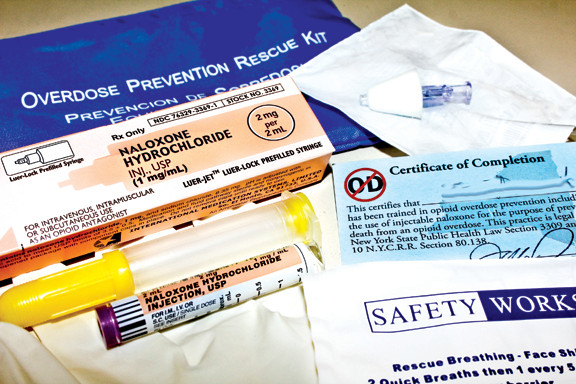More than just Narcan
Herald editor attends training session educating residents about drug addiction
When I attended a Narcan training session at the East Meadow Public Library on May 28, I knew I was going to be leaving with a kit equipped with the drug that prevents deadly overdoses. What I did not expect was to be inundated with information about addiction from a handful of experts, or to hear stories from people whose lives have been forever changed by heroin.
Heroin is something that’s never been part of my own life, or that of anyone close to me. But nearly every day, it seems, we hear tragic stories of young lives cut short by heroin abuse. A high school classmate of mine overdosed and died four years ago. Already this year, Nassau County police have responded to seven nonfatal overdoses and one death.
In 2006, the State Legislature passed a law allowing people who are not otherwise medically trained to carry and administer Narcan — known generically as naloxone — an opioid-reversal agent that prevents deadly overdoses. Nassau County began hosting training sessions in late 2012 to provide residents with the life-saving drug. It can be administered by injection or nasal spray, and the training focuses on the intranasal version. The county has hosted 56 sessions in a year and a half, and I wanted to go through the training myself.
My first mistake was thinking that its sole purpose was to distribute Narcan. Instead, the two-hour session devoted much time to what happens after the drug is administered: the next steps in fighting addiction, and how to receive help. “You have to leave here knowing, ‘What do I do now?’” explained Eden Laikin, Nassau County’s director of governmental research. “We revived him. Now what?”
The lifesaving drug
I’ve known about Narcan for a while, but I didn’t know how it worked. Almost instantly, I learned, the drug pushes opioids off receptors on the brain and serves as a protector, preventing the potentially fatal chemicals from being activated. The protection lasts 30 to 90 minutes, leaving plenty of time to call 911 for further assistance.









